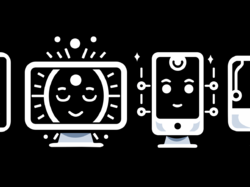How Developers Are Using Apple's Local AI Models with iOS 26
By
Josh Clark
Published Sep 30, 2025
While Apple certainly bungled its rollout of Apple Intelligence, it continues to make steady progress in providing AI-powered features that offer everyday convenience. TechCrunch gathered a collection of apps that are using Apple’s on-device models to build intelligence into their interface in ways that are free, easy, and private to the user.
Earlier this year, Apple introduced its Foundation Models framework during WWDC 2025, which allows developers to use the company’s local AI models to power features in their applications.
The company touted that with this framework, developers gain access to AI models without worrying about any inference cost. Plus, these local models have capabilities such as guided generation and tool calling built in.
As iOS 26 is rolling out to all users, developers have been updating their apps to include features powered by Apple’s local AI models. Apple’s models are small compared with leading models from OpenAI, Anthropic, Google, or Meta. That is why local-only features largely improve quality of life with these apps rather than introducing major changes to the app’s workflow.
The examples are full of what we call casual intelligence in Sentient Design. These are small, helpful interventions that drizzle intelligence into traditional interfaces to ease frictions and smooth rough edges.
For iPhone apps, these local models provide a “why wouldn’t you use it?” material to improve the experience. Just like we’re accustomed to adding JavaScript to web pages to add convenient interaction and dynamism, now you can add intelligence to your pages, too.
Starting small is good, and this collection of apps provides good inspiration for designers who are new to intelligent interfaces. Some examples:
- MoneyCoach uses local models to suggest categories and subcategories for a spending item for quick entries.
- LookUp uses local models to generate sentences that demonstrate the use of a word.
- Tasks suggests tags for to-do list entries.
- DayOne suggests titles for your journal entries, and uses local AI to prompt you with questions or ideas to continue writing.
And there’s plenty more—all of them modest interventions that build on simple suggestions (category/tag selection and brief text generation) or summarization. This kind of casual intelligence is low-risk, everyday assistance.





